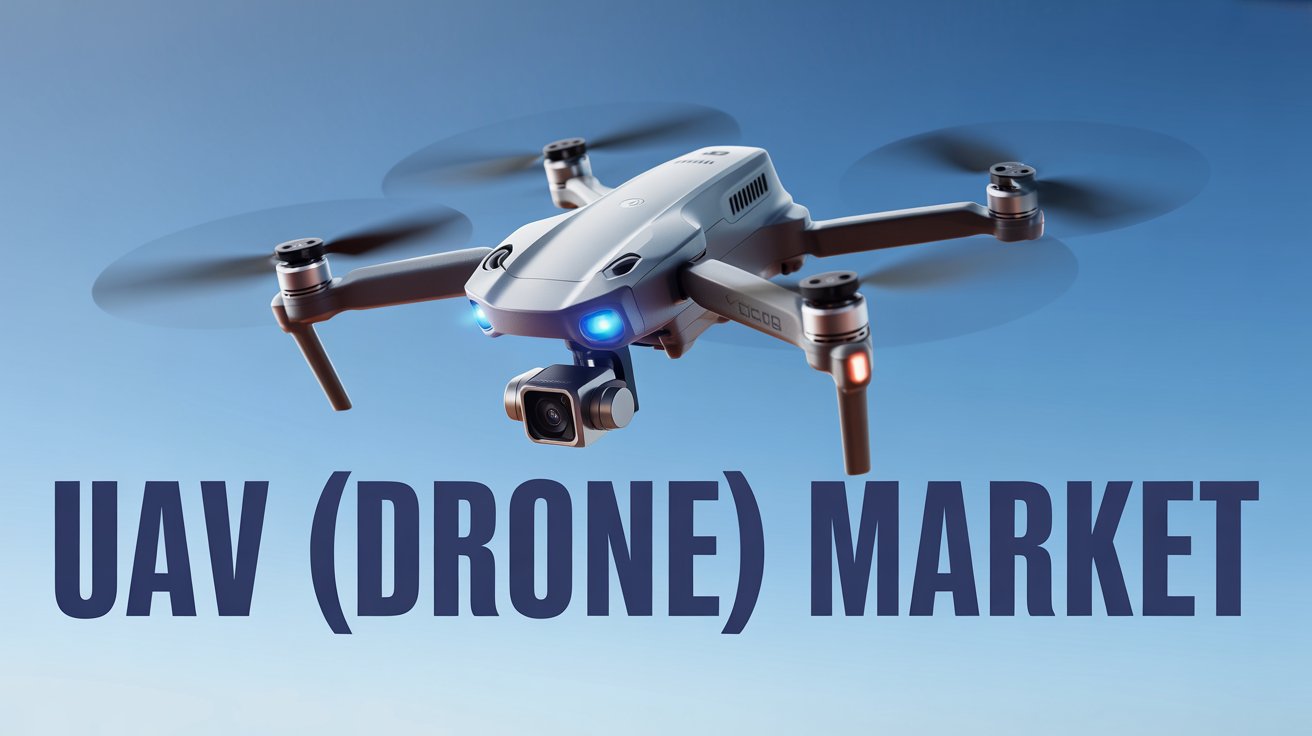The UAV (Drone) Market is rapidly transitioning into one of the most dynamic segments of modern aerospace and robotics. According to the report “UAV (Drone) Market by Type, Platform, Point of Sale, Systems, Function, Industry, Application, Mode of Operation, MTOW, Range and Region – Global Forecast to 2030”, the market is projected to grow from USD 26.12 billion in 2025 to USD 40.56 billion by 2030 at a CAGR of 9.2 percent. This growth is fueled by accelerated commercial adoption, expanding defense modernization programs, and leapfrog advances in AI, autonomy, and communication technologies.

Organizations worldwide are increasingly turning to next generation UAVs to improve productivity, reduce operational costs, and enhance situational awareness across industries such as agriculture, energy, logistics, construction, security, and public safety. The integration of drones into automated workflows and enterprise digital systems continues to unlock new capabilities, making UAVs essential tools for data acquisition, transport, and surveillance.
Download PDF Brochure @ https://www.marketsandmarkets.com/pdfdownloadNew.asp?id=662
Rising Demand for Fully Autonomous UAVs
Among all operational categories, the Fully Autonomous UAV segment is projected to grow at the highest rate. This surge reflects the widespread integration of artificial intelligence, sensor fusion, and advanced navigation systems into drone platforms. Fully autonomous UAVs can undertake missions with minimal human oversight, making them ideal for long duration surveillance, remote area inspections, border monitoring, precision agriculture, and defense missions where risk reduction and continuous operation are critical. Increasing government support for autonomous flight trials, including Beyond Visual Line of Sight (BVLOS) approvals, is also driving market momentum.
Expanding BVLOS Capabilities
The BVLOS segment is also expected to grow strongly, as enterprises and government agencies increasingly adopt long range UAV operations. BVLOS capabilities allow drones to travel far beyond the visual field of the operator, significantly extending mission reach and efficiency. This capability supports applications such as long distance infrastructure inspection, persistent border patrol, emergency response in hazardous environments, and rapidly evolving drone delivery networks. Technological advancements in detect and avoid systems, AI driven flight controllers, and satellite connectivity are enabling safer, more reliable BVLOS operations across sectors.
North America’s Continuing Market Leadership
North America is projected to maintain the largest market share through 2030. The region benefits from a combination of high defense spending, early commercial adoption of advanced drones, and a strong ecosystem of manufacturers and technology developers. Enterprises in agriculture, utilities, mining, and public safety have rapidly integrated UAVs into everyday operations. Additionally, supportive regulatory progress and the presence of global innovators continue to position North America as a hub for UAV research, development, and deployment.
Competitive Landscape and Strategic Priorities
The UAV industry has a diverse and competitive ecosystem. Key players include Raytheon Technologies, General Atomics, Northrop Grumman, DJI, Elbit Systems, Israel Aerospace Industries, AeroVironment, Parrot Drone, Ehang, Boeing, Thales Group, and Textron. These companies are expanding their product lines, forging new partnerships, and investing heavily in autonomous technologies to enhance mission capability. Many are also focusing on robust aftermarket services, integrated software platforms, expanded payload options, and AI enabled analytics to strengthen their value proposition.
Evolving Industry Applications
The UAV market is experiencing an expansion in mission scope across civil, commercial, and defense sectors. In defense, drones play an essential role in intelligence gathering, border surveillance, precision targeting, and field logistics. Commercial industries rely on UAVs for crop health analysis, infrastructure monitoring, 3D mapping, environmental observation, emergency response, and inventory management. The emergence of advanced communication networks such as 5G is enabling real time data exchange and remote precision control, further accelerating adoption.
Ask for Sample Report @ https://www.marketsandmarkets.com/requestsampleNew.asp?id=662
Future Outlook: UAVs as a Core Component of Global Modernization
The future of the UAV market is shaped by continuous innovation in autonomy, communication, propulsion, and onboard computing. As governments refine drone regulations and industries adopt automated aerial systems at scale, UAVs will become fully integrated components of global operational infrastructure. By 2030, drones are expected to redefine critical workflows across transportation, security, agriculture, resource management, and national defense.
